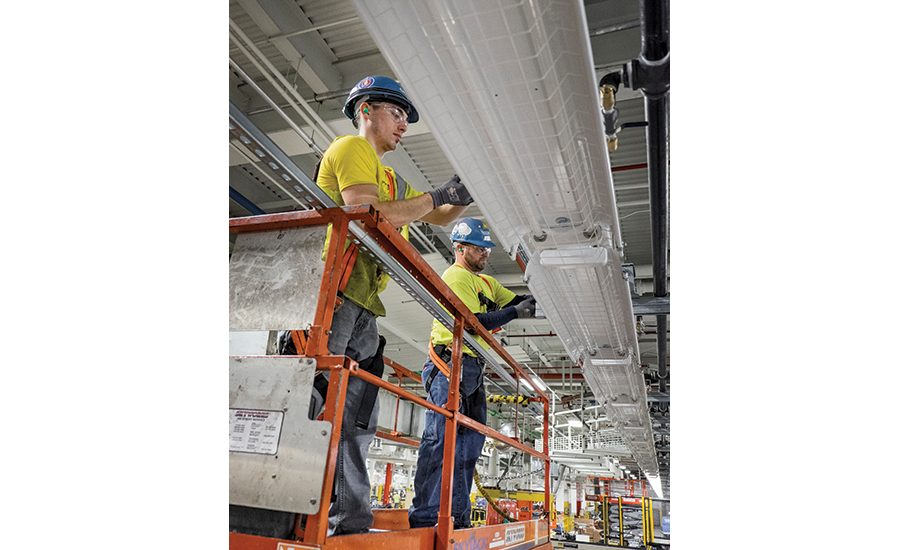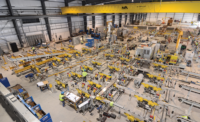Among the theories floated for this year’s lagging response by specialty contractors to ENR’s annual regional surveys is that those contractors have just been too busy working. Results from companies working in the Midwest certainly support that theory.
When the results did come in, the revenue numbers for specialty contractors working in Indiana, Illinois, Michigan, Missouri, Ohio and Wisconsin showed increases across the board. The top 10 firms reported total revenue of about $3.31 billion in 2015, up 10.44% over the previous year. The revenue figure for the top 20 firms totaled more than $4.82 billion, up 11.31%.
|
Click Here to View ENR Midwest Top Specialty Contractors 2016 |
This year, 22 firms recorded more than $100 million in regional revenue, up from 18 last year. The top firm was again EMCOR Group Inc., which had regional revenue of $1.29 billion, up about $20 million. Overall results and sector breakdowns are detailed in the charts on the pages that follow.
As has been shown in our top owners, design firms and contractors surveys earlier this year, it’s a good time to be in construction in many markets throughout the Midwest. The opportunities don’t come without potential pitfalls, however.
“First and foremost is being aware” of cost escalation, says Marc Poskin, vice president of preconstruction at International Contractors Inc., based in Chicago. “As a construction manager, we make sure that owners understand time is money and that, if you’re doing a project that’s more than six months away from the time you’re doing an estimate on it, you need to account for escalation.”
Poskin believes that in the past cost escalation has been ignored throughout the industry. He currently puts the increase in prices at 1.95% annually in the Chicago market based on R.S. Means data. “It’s always hard to look into a crystal ball and forecast out what’s going to happen, but if you look at the recent past, I think it helps,” he says.
This is especially so for any shovel-ready projects awaiting funding that might be three, five or even 10 years away, requiring as much as 20% tacked on to today’s dollars. “I’ve reviewed estimates, and the first thing I look for is time. Time is money,” says Poskin. “I think a lot of owners don’t think about it that much. I’ve always made an effort to make sure that is one of the things that we address.” Labor and materials are specific factors, he says. “Every June in Chicago, we have labor increases with the unions and the tradesmen, so we always make sure that we have those accounted for. Material prices are always fluctuating based on the time of the year and things going on.”
The construction market is good right now, particularly in the commercial sector. “Owners are definitely looking to do projects in Chicago,” says Poskin, “and we’re definitely seeing the fruits of that. What’s concerning some of us is the lack of skilled trades. There’s been a demand for skilled tradesmen, and some companies simply can’t bid work because they don’t have the human resources to do it. Because of that, prices have gone up a little bit in labor, and we’re seeing less participation on certain projects.”
All contractors—specialty ones included—also need to come to grips with the growing use of integrated project delivery (IPD), experts say. In other words, get with the team, says Jim Rossmeissl, senior executive vice president at The Boldt Co.
“We just finished a very successful hospital project in Ohio,” says Rossmeissl, whose Appleton, Wis.-based company ranked No. 12 among ENR Midwest’s top general contractors this year, “and one of the owner’s hometown subcontractors was brought into the circle. This particular subcontractor, one of the favorites of the owner, didn’t feel comfortable playing ball in that kind of a shared relationship, and the owner was committed to integrated project delivery, so it wound up that subcontractor said, ‘I’m not in,’ … and we brought in a sub from four states away to do the work.”
Success boils down to providing owners with the best work possible, says Rossmeissl, who cites health care as a leading IPD sector. “We’re collaborative, and we like to understand,” he says. “If there’s a better way to do it, we at Boldt are interested in that, and feel we can then turn better products—better buildings—over to our clients.”






Post a comment to this article
Report Abusive Comment